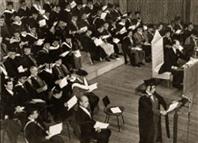So far this column has been dedicated to comments on style in writing. For a change, we are making a little foray into sartorial territory in this issue. The emphasis is on correctness rather than fashion, in line with the general tenor of the column.
Dress Code
Dress code is the form of attire that is deemed appropriate to a place or an occasion, for example the rules observed at certain ceremonies and receptions, and at hotels, restaurants, concert halls and religious establishments. While dress codes are seldom enforced by law, it is good manners to respect them where they are prescribed, and it is never pleasant to be the odd person out, and to be stared at by others for the outlandishness of what one wears.
Customs vary from place to place but there are some basic observances that are common to all in the English-speaking world. Usually our first encounter with a prescribed dress code appears on an invitation card. In descending order of formality, they can be:
-
Morning Coat. It is most unlikely to be required today, but was indeed the prescribed dress for the inaugural congregation of CUHK, at which Sir Robert Black, as Chancellor, wore one (and so did some of the guests). It means a morning coat with tails for the man and a nice dress or suit, preferably with hat and gloves, for the woman. We at the University really do not have to worry about it at all nowadays.
-
There are two types of prescribed clothing for a formal evening. White Tie refers to an evening coat with tails (orchestral players still wear it) for the man, and floor length evening dress (NOT night gown, or night dress—they are something else) for the woman. Less formally, you will be asked to wear the black tie. This Black Tie is a black bow-tie, worn with a dinner jacket (British, sometimes abbreviated to DJ), which is the same thing as a tuxedo (US). For the woman it means a smart evening dress.
-
On other occasions which take place during daytime, we often see Lounge Suit inscribed on the invitation card. Lounge suitis the equivalent of Business Attire in North America, and is exactly what it means: a suit for the man, and corresponding clothing for the woman. This is the most common dress code prescribed in Hong Kong nowadays, and is the standard requirement for occasions ranging from degree congregations to receptions at the Government House.
- Smart Casual. The vogue of this expression probably began at about the same time as the ascendancy of the IT tycoons. As those who dress themselves in a smart and casual manner are most likely to be free spirits beyond the bondage of conventions, it is a bit hard to define. Common sense would suggest that it involves a nice blazer, usually but not necessarily navy or black, a pair of good trousers that can go with the blazer (e.g., grey or beige), a plain shirt, usually no tie but perhaps a cravat, and oxfords or loafers (boat shoes only if you are really boating).
Editor
www.iso.cuhk.edu.hk/english/features/style-speaks/index.html


































































































































































Social Bookmarks